Top 15 Most Popular Iraqi Foods
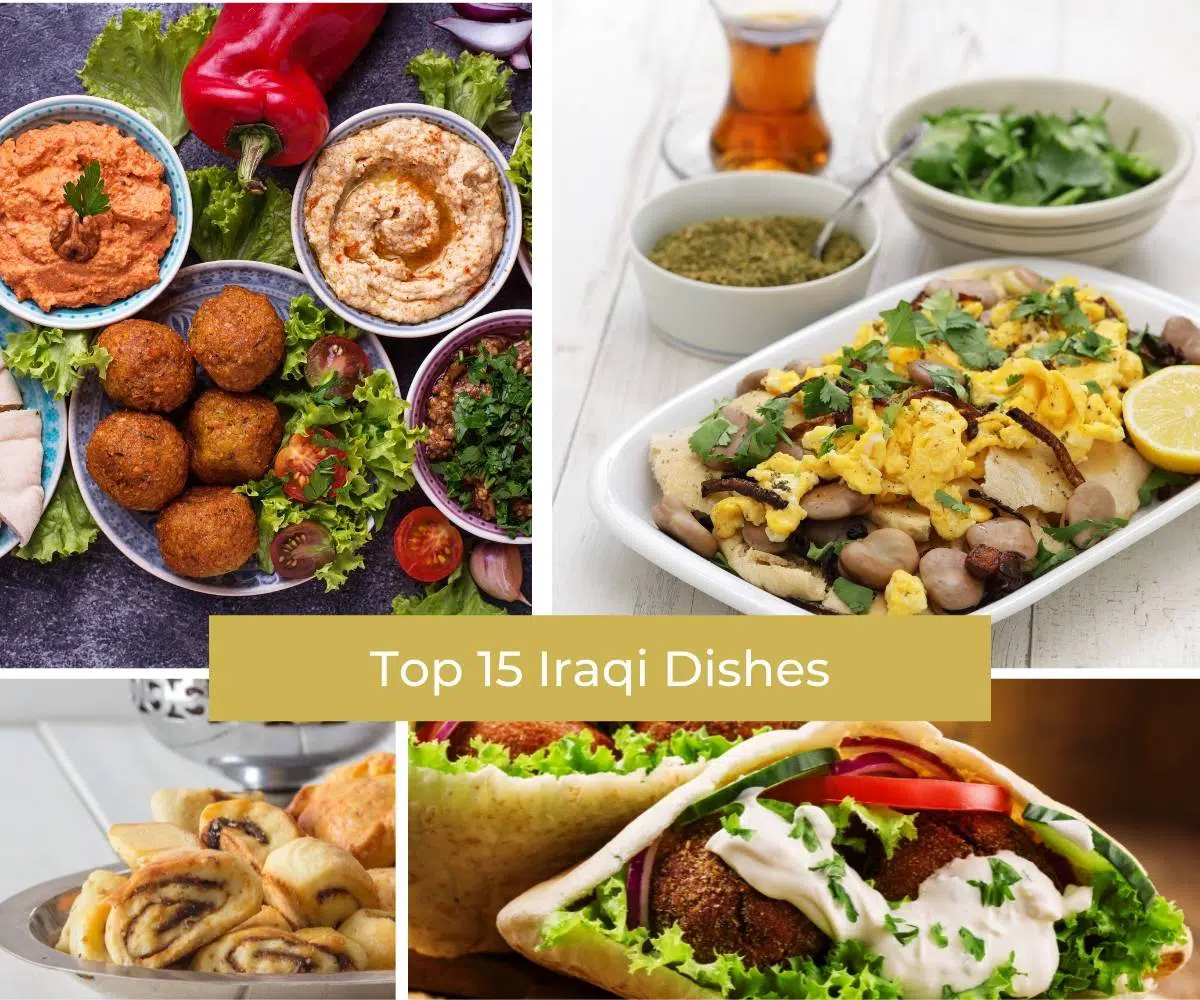
Iraqi cuisine is one of the oldest in the world. Some tablets found in ancient Iraqi monuments that date back to the Babylonians show recipes for preparing food in temples during religious holidays.
However, modern Iraqi food is mostly inspired by Persian and Turkish cuisine, as the Ottoman Empire had a big influence over that region. In this compilation, we have tried to include the most authentic Iraqi food possible.
You will notice that most Iraqi dishes have some sort of animal-based protein source, especially lamb, as the nation is known for sheep husbandry.
Although the country gets most of its goods imported from neighboring countries, Iraqis try to make the most of their treasured natural resources, mainly dates and amber rice, which has a very distinctive smell, high protein content, and is slightly bigger in size than usual basmati rice.
So without further ado, let’s get this ranking started and showcase the most popular Iraqi dishes.
1. Masgouf (مسگوف)
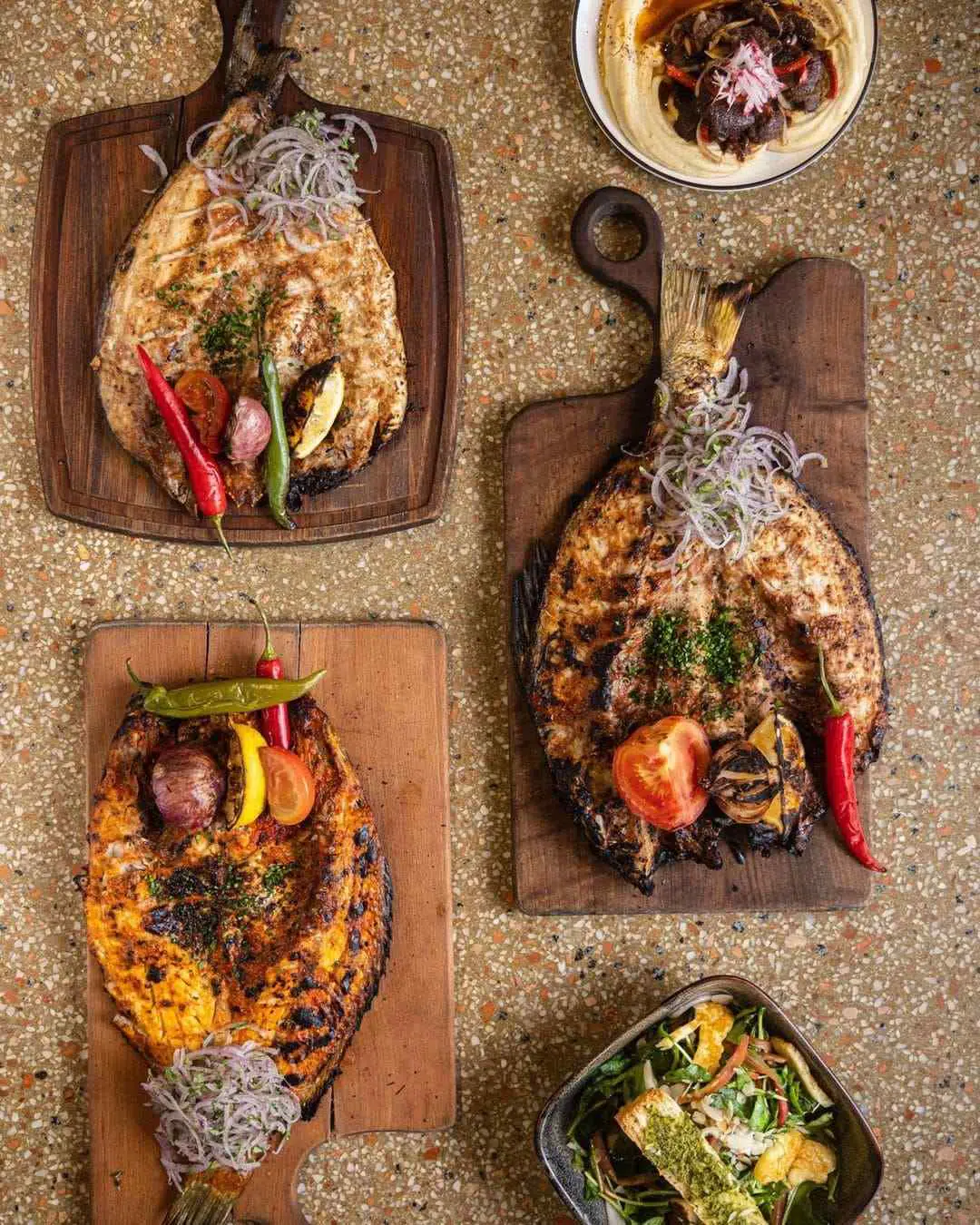
We had to start the list with Masgouf, also known as the national dish of Iraq. It’s a simple and easy-to-prepare fish barbeque that is cooked vertically, low and slow making it crispy on the outside but very juicy and tender on the inside.
The most often used fish is freshwater carp, which can be found in both the Tigris and Euphrates river, making this Iraq’s national dish.
The seasoning for the fish is kept to a minimum as only salt and black pepper are used. Condiments commonly served with the dish are Iraqi vegan-style pickles, known locally as torshi. They are made with a wide variety of vegetables such as cucumber, cauliflower, carrot, zucchini, and peppers pickled in date vinegar.
Also, it is common for Iraqi people to finish the dish with a cup of Iraqi cardamom-flavored tea.
2. Iraqi Dolma (دولمة)
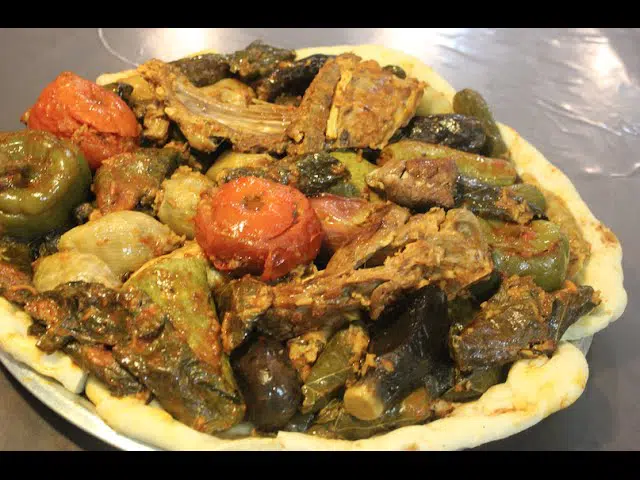
The pearl of Iraqi food, Iraqi dolma, is a dish you must try if you ever have the chance. While many Middle Eastern countries that were once part of the Ottoman empire have a take on this dish, none of them comes even close to the Iraqi interpretation.
Essentially, it is stuffed vegetables simmered in a tomato-based sauce until most of the sauce has boiled away.
The stuffing is made with a 50/50 mixture of ground lamb fat and meat, with rice, pomegranate molasses, and the remains from the peeled vegetables, so nothing is wasted. All of these ingredients combine to make each bite a flavor bomb. The dish is so good it is usually served alone.
If you are excited to try it, you need to know one thing: it’s not an easy dish to make. Mastering the preparation, especially the art of rolling the Swiss chard, requires serious skills. That’s why it’s typically the elder women of Iraqi households who take on the task of cooking this delightful dish. However, it’s a skill worth learning, which is something you will agree with once you have tried it for the first time.
3. Bagila Bil Dihin ( باقلاء بالدهن)
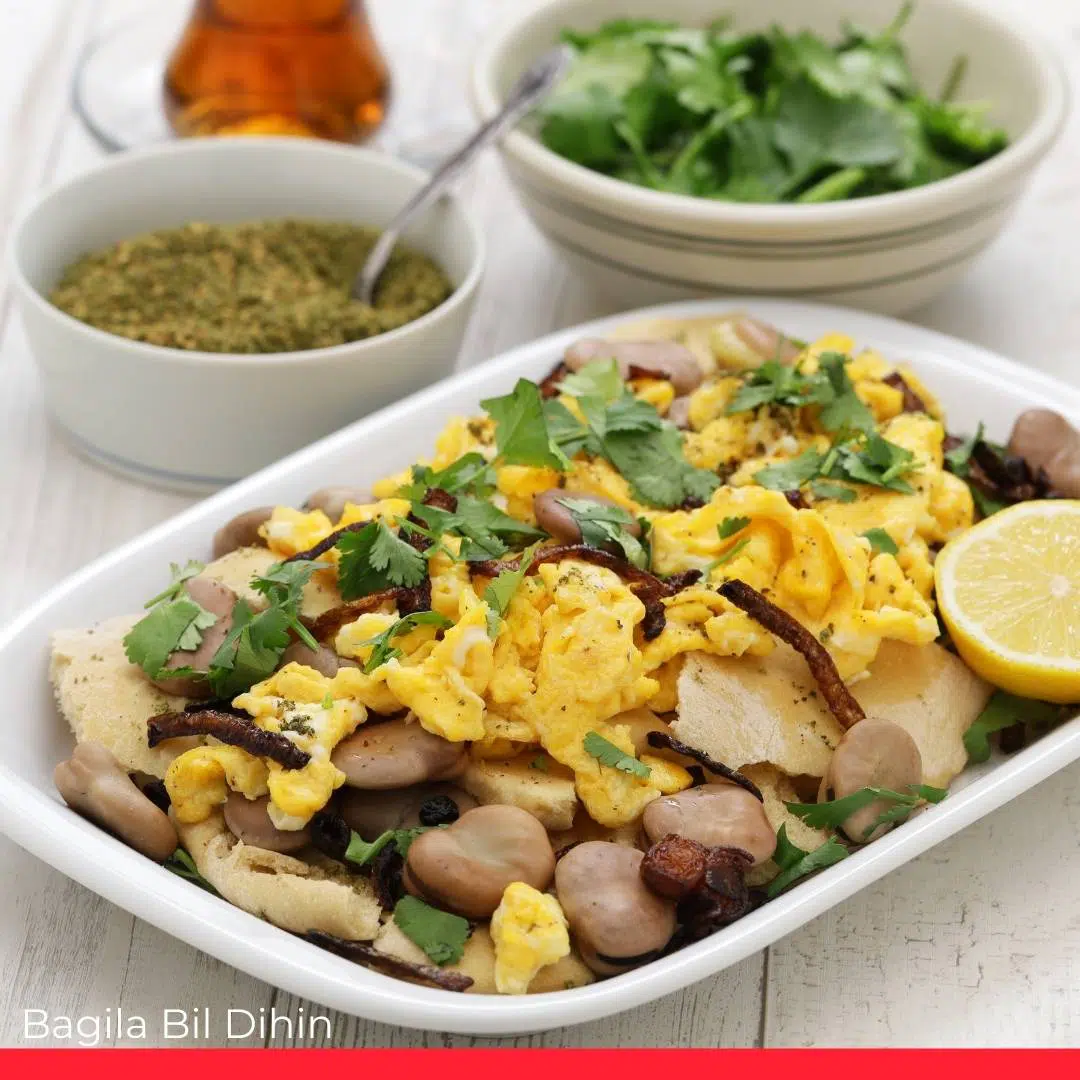
Bagila Bil Dihin is one of the most popular and traditional breakfasts in Iraq. It is basically dried broad beans, soaked in water overnight, and cooked slowly until they are soft.
It’s served with a small cut of tanner bread on the bottom, which soaks up all the rich and delicious flavor, then topped with an omelet-style fried egg and hot sizzling oil (usually clarified butter). It is also common to garnish the dish with fresh lemon juice and sprinkle some dried Stachys, which is optional.
4. Torshana (طشرانة)

Torshana or Gaysi is a sweet and sour gravy made with dried apricots and prunes.
It is mainly cooked with some sort of meat, usually lamb. However, there is no exact recipe for Torshana; you can play around with the ingredients increasing the acidity or sweetness, you can add raw almonds, or you can cook it without meat vegan style, making it a great option for people on a plant-based diet. It is served with basmati rice as a side dish.
Due to the high-calorie count of the dish, it is commonly cooked in the Holy Month of Ramadan as Iraqi people fast from sunrise to sunset and need calorie-dense food to compensate for the energy lost during fasting hours.
5. Halawa Dhin (حلاوة دهين)

If you walk through the old bazaar in the city of Najaf, you will see vendors selling the city’s signature food.
Halawa Dehina, also known as Dhein, is a delicious and truly traditional Iraqi desert found nowhere else in the world.
It is a thick textured mixture made of clarified butter, a lot of sugar, date honey, and milk which is then thickened with wheat flour and cooked in an oven just long enough to bake the outer layer. It’s then crowned with shredded coconut and almonds or walnuts.
Also, it can be stored for weeks if kept sealed in a plastic container. However, don’t expect the same mouthwatering taste as when you eat it fresh.
6. Mosul Kubba (كبة موصلية)

Kubba is known across the middle east, especially in Lebanon and Syria. It is ground meat-stuffed dumplings made mainly with minced rice and is usually served as an appetizer.
However, the Iraqi take on it is quite unique. Unlike other types of Kubba, Mousl Kubba is cooked as one whole big circle and cut into triangles, just like a pizza.
The outer shell is made from bulgur and is not deep-fried. Rather, it is boiled. The stuffing is very rich in flavor owing to the mixture of spices and crushed pine nuts. Topped with pomegranate molasses, it has a great sweet taste.
It is served with vegetables and pickles on the side. The good news is that it can be found frozen in Western markets and across the world. However, it is not the same as when freshly made.
7. Kubba Hamuth (كبة حامض)

Translated as sour kubba, kubba Hamuth is a sour turnip and Swiss chard soup with meat-stuffed dumplings.
It is traditionally cooked in the rainy season, the reason for which is unknown to this day. It could be due to the soup being so rich in ingredients that it warms you up fast.
Kubba dumplings are easy to prepare and very delicious.
8. Qeimeh (قيمة)

Although originally an Iranian dish, Iraqis love Qeimeh. It is a stew consisting of diced mutton, tomatoes, split peas, onion, and dried lime. Unlike the Iranian version, the Iraqi take on this dish does not include garnishes of fried eggplant or French fries. Instead, it is typically served with white basmati rice, which is a common accompaniment to most Iraqi food.
The dish is also associated with religious occasions in Iraq when the dish is cooked in large batches and donated to those in need.
9. Quzi (قوزي)
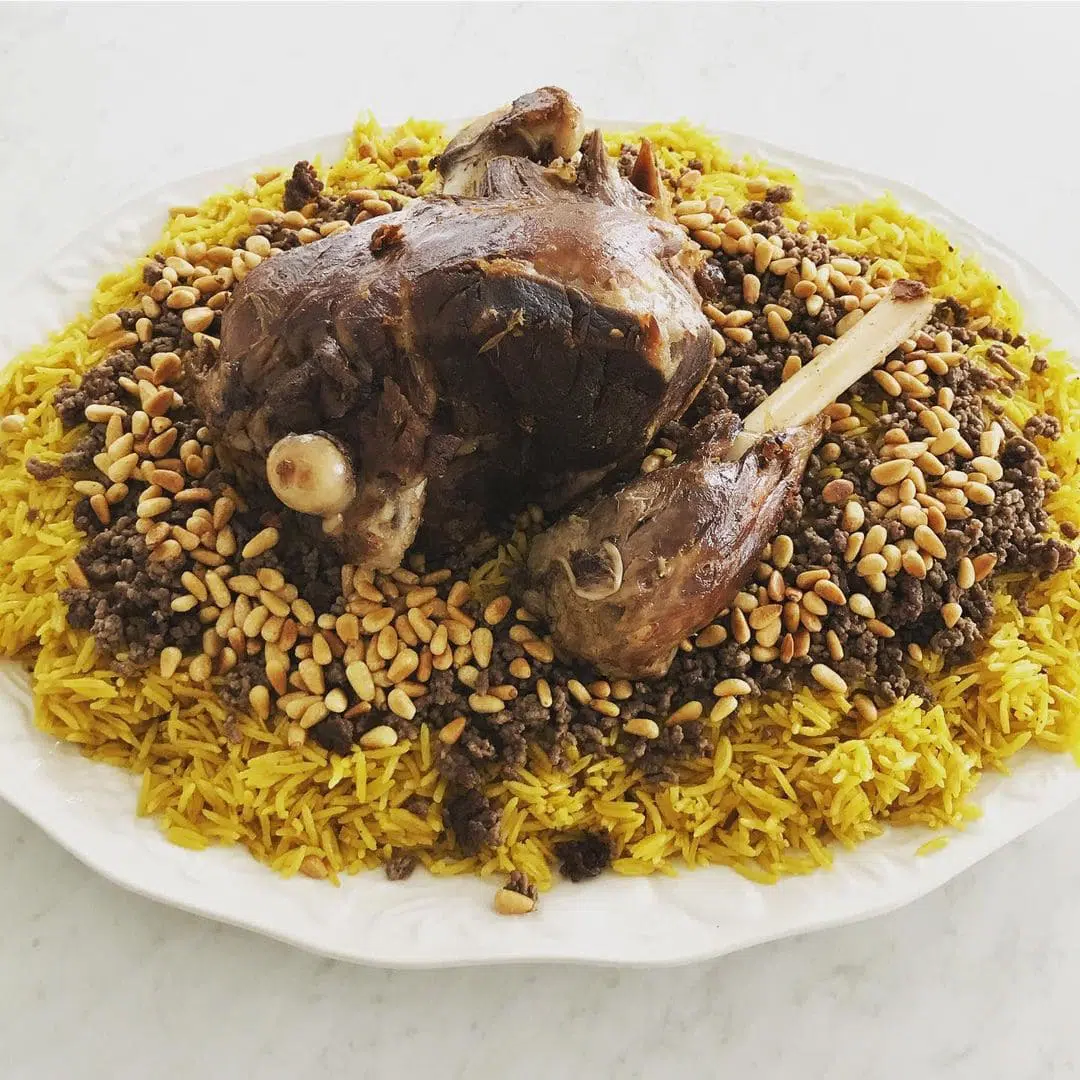
A very popular meat dish in Iraqi cuisine, Quzi or Qoozi is stuffed with roasted lamb and is a very heavy dish. The lamb is stuffed with rice, vegetables, nuts, and spices all cooked slowly on low heat until the meat starts to fall apart. The lamb is placed over saffron-flavored rice and garnished with more nuts and dried raisins.
It’s usually cooked for social occasions and gatherings and served with many condiments and salads on the side.
10. Makhlama (مخلمة)
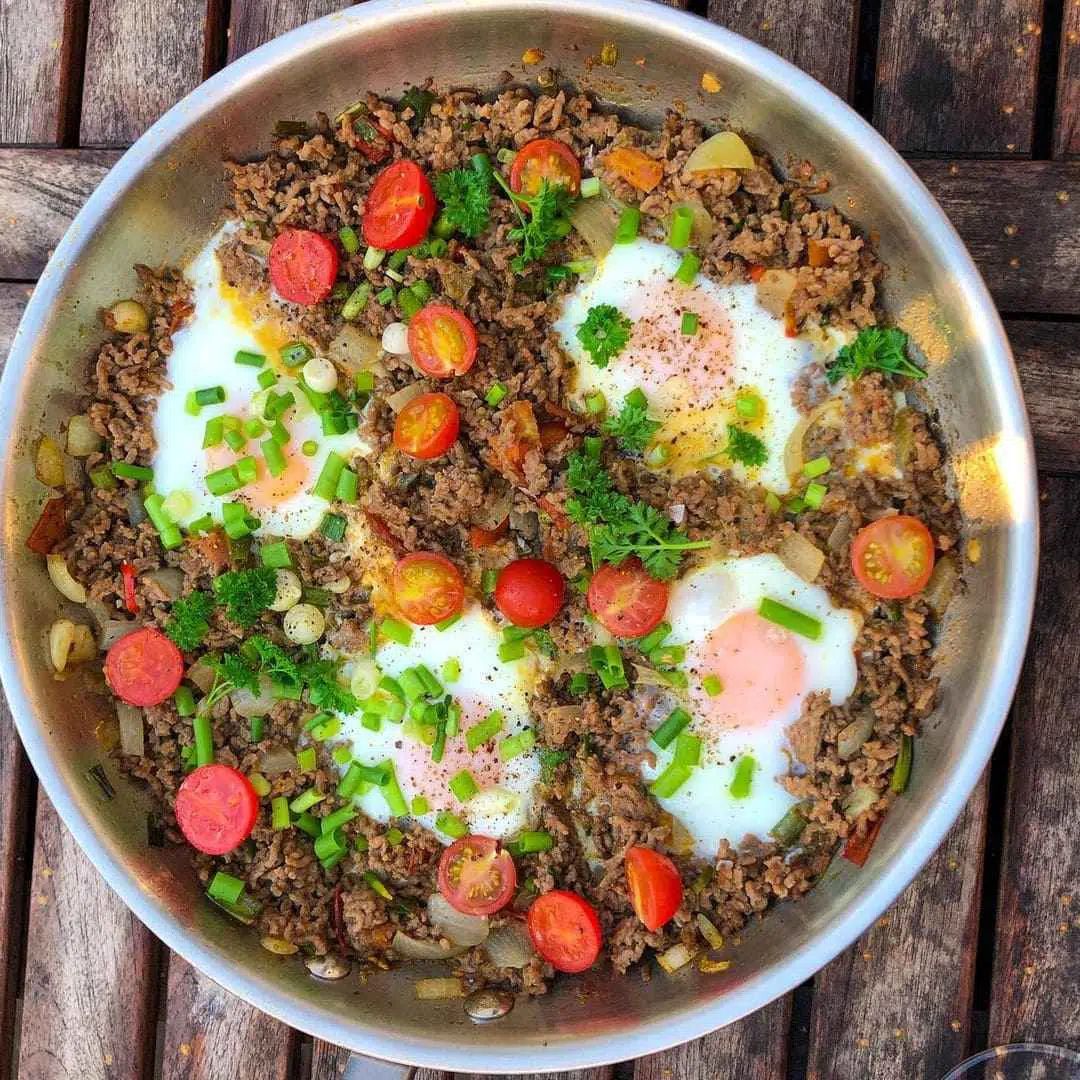
Another very popular breakfast in Iraq, Makhlama is basically a large skillet of fried eggs, tomatoes, onions, and heavily spiced diced lamb, which you eat by scooping it up with pieces of warm Iraqi Tannour bread and enjoying with a warm cup of Iraqi tea, known locally as chai.
11. Falafel (فلافل)

Just as other nations of the Middle East do, Iraq enjoys falafel. However, it’s a bit different from your traditional falafel sandwich.
The bread used is known locally as Samoon, which is a yeast bread baked in a traditional stone oven and has a unique diamond-looking shape.
Moreover, instead of tahini sauce, in Iraq a local amba sauce is used, a tangy mango pickle condiment. Iraqi torshi, pickles made with date vinegar, and any salad are served alongside. Also, some people like to serve fried vegetables, for example, French fries, eggplant, and cauliflower, but these are optional.
All these ingredients combine to make such a thick and delicious sandwich you will have a hard time knowing where to start. It is usually enjoyed with a sour yogurt drink that is made locally in the falafel store itself.
12. Pacha (باجة)
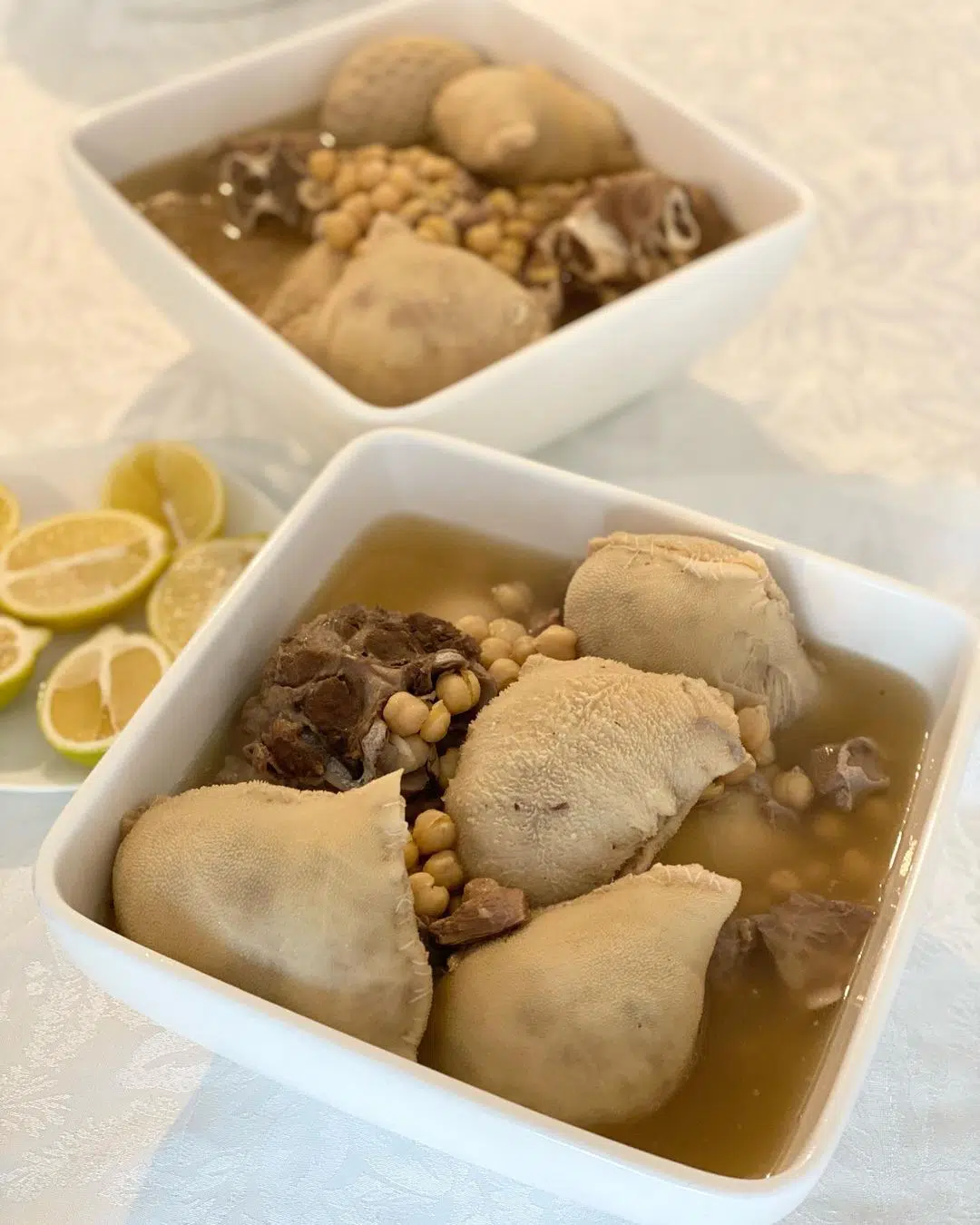
This is a dish that might sound bizarre, but you will change your mind once you try it.
Pacha is a traditional Iraqi dish made with stuffed lamb heads, intestines, and legs, with small pieces of meat. It can also be made with those from a calf or cow.
All the parts are cleaned well and heavily seasoned with salt, cinnamon, cardamom, dried lime, and other Iraqi local spices. Although an Iraqi dish, it’s very common to find it in Syria and the Gulf countries as well. It is usually consumed for breakfast by laborers.
13. Klecha (كليجة)

As mentioned in many poems and books throughout history, Iraq was and is still known for producing high-quality dates that are not found anywhere else in the world. As a matter of fact, most date farms across the world, from Saudi Arabia to Western countries, took their pollen from Iraqi palm trees to try to replicate that high-quality date crop. So, it’s no wonder that Iraqis use their treasured natural resource in their diet.
Mostly baked for Eid (which is the equivalent of Christmas to the Western world), Klecha is a date-paste stuffed cookie, that can be shaped as dumplings or as discs just like mini cinnamon rolls.
The stuffing can also be Turkish lokum (Turkish delight) or a mixture of cinnamon and crushed walnuts, and it’s usually served with tea as a snack.
14. Margat Bamia (مرقة بامية)

Moving to one of Iraqis’ most loved stews, Margat Bamia is an okra and lamb stew made with tomato sauce as a base. One of the essential ingredients that distinguish Iraqi Bamia from other okra-based stews is the addition of citric acid.
The lamb cut commonly used for the dish is ribs and shank. However, you can use any part that is close to the bone.
It’s usually served with white basmati rice and salad, but it can also be served with small pieces of warm tannour bread on the bottom, which Iraqs call Tashreb Bamia, or soaked Okra.
15. Timman Bagilla (تمن باقلاء)

Timman Bagilla, also known in neighboring Iran as Baghali polow, is a rice dish that is made with fresh fava beans and dill, which is typical of Iraqi cuisine.
It is served as a single dish and can be garnished with meat, usually fried chicken or lamb chops. It is also very common to accompany it with a refreshing Turkish yogurt side, called jajik or cacik.
The dish is mainly cooked in spring and summer when fresh beans are abundant on the market shelves.


Thank you for this important post Mr.Saif! As an Iraqi living abroad it’s helped me learn and revive my traditional foods at home !